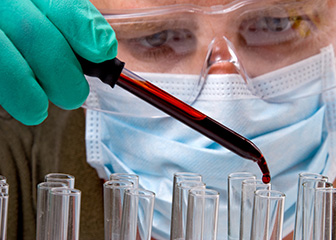Summary
Please enable javascript to play this video.
| Quick Facts: Clinical Laboratory Technologists and Technicians | |
|---|---|
|
$61,890 per year
$29.75 per hour |
|
| Bachelor's degree | |
| None | |
| None | |
| 351,200 | |
| 2% (Slower than average) | |
| 6,000 | |
What Clinical Laboratory Technologists and Technicians Do
Clinical laboratory technologists and technicians perform medical laboratory tests for the diagnosis, treatment, and prevention of disease.
Work Environment
Most clinical laboratory technologists and technicians work in healthcare settings such as hospitals, medical and diagnostic laboratories, and doctor’s offices. Most work full time.
How to Become a Clinical Laboratory Technologist or Technician
Clinical laboratory technologists and technicians typically need a bachelor’s degree to enter the occupation. Technicians sometimes qualify for jobs with an associate’s degree. Some states require technologists and technicians to be licensed.
Pay
The median annual wage for clinical laboratory technologists and technicians was $61,890 in May 2024.
Job Outlook
Employment of clinical laboratory technologists and technicians is projected to grow 2 percent from 2024 to 2034, slower than the average for all occupations.
Despite limited employment growth, about 22,600 openings for clinical laboratory technologists and technicians are projected each year, on average, over the decade. Most of those openings are expected to result from the need to replace workers who transfer to different occupations or exit the labor force, such as to retire.
State & Area Data
Explore resources for employment and wages by state and area for clinical laboratory technologists and technicians.
Similar Occupations
Compare the job duties, education, job growth, and pay of clinical laboratory technologists and technicians with similar occupations.
More Information, Including Links to O*NET
Learn more about clinical laboratory technologists and technicians by visiting additional resources, including O*NET, a source on key characteristics of workers and occupations.
 United States Department of Labor
United States Department of Labor









